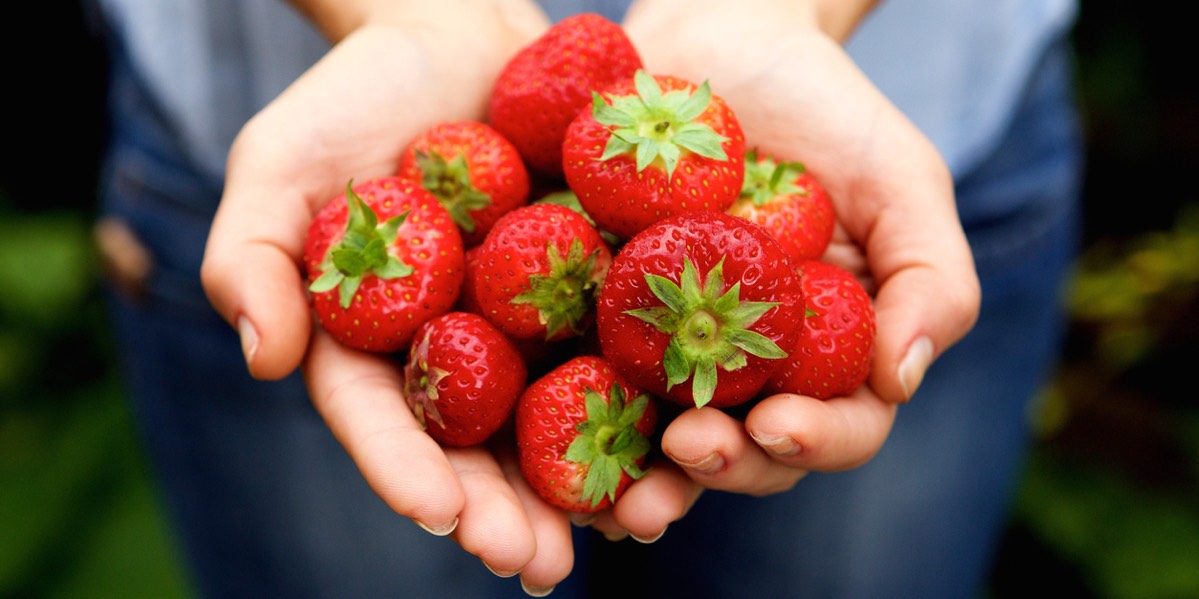Strawberries, blackberries, blueberries and raspberries are some of our favorite springtime fruits and you’ll find plenty in your local supermarkets. Unfortunately, those beautiful fruits have a secret… many contain high levels of pesticides.
Every year, the Environmental Working Group reviews the testing done by the USA Food and Drug Administration to determine which foods are the most and least contaminated with pesticides and other harmful chemicals. During this years study, they found one sample of regular (non organic) strawberries that contained a whopping 22 identifiable pesticide residues. 98% of strawberries, peaches, potatoes, nectarines, cherries and apples tested positive for atleast one pesticide residue.
What are they contaminated with? Pesticides and fungicides known to cause cancer, reproductive and developmental damage, hormone disruption and neurological problems, many banned in other countries. Three are of particular concern.
- Carbendazim, a hormone-disrupting fungicide that damages the male reproductive system, was detected on 30 percent of 2014 samples. The European Union has banned it because of its intense toxicity.
- Bifenthrin, found on more than 40 percent of samples in 2014, is an insecticide that California regulators have designated a possible human carcinogen.
- Malathion, found on more than 20 percent of samples in 2009 and 10 percent in 2014, is toxic to the nervous system and, according to the International Agency for Cancer Research, a probable human carcinogen. It is often sprayed to eradicate mosquitos and other insects.
Strawberries used to be a seasonal treat, available only during the spring and summer months. Today, it’s become a year round commodity thanks to the heavy use many different chemicals. Environmental and chemical safety advocates are particularly concerned with “the jaw-dropping volumes of poisonous gases – some developed for chemical warfare but now banned by the Geneva Conventions – to sterilize their fields before planting, killing every pest, weed and other living thing in the soil.”(2)
California data shows that in 2014, nearly 300 pounds of pesticides were applied to each acre of strawberries. In contrast, only 5 pounds are applied to an acre of corn. This represents only 20% of the chemicals used. The remaining 80% used, more than 9.7 million pounds in 2014, were poisonous gases injected into the soil.
Clearly, if you love strawberries, you MUST protect the health of your family by purchasing organic strawberries and the other fruits and veggies listed in the Dirty Dozen list instead. Yes, they will be about 50% more expensive but, as more and more growers switch to organic farming, the price should drop.
The EWG Clean Fifteen & Dirty Dozen lists provide a roadmap for consumers who want to eat safer, more chemical free meals. They urge consumers to buy organic versions of those fruits and vegetables found on the Dirty Dozen list. In contrast, foods listed in the Clean Fifteen are more reliably chemical free and can be more safely purchased. Of course, purchasing at Farmer’s markets where you can ask the vendors if they have been treated chemically, is wise as well.
- EWG Dirty Dozen – EWG’s 2018 Shoppers Guide To Pesticides in Produce
- Walker B, Lunder S. Pesticides + Poison Gases = Cheap, Year-Round Strawberries. Environmental Working Group Copyright 2016
Here are some of our favorite Strawberry dessert recipes!
- Berry Topped Mini Cheesecakes
- Fresh Strawberry Glazed Cheesecakes (No Bake)
- Strawberry Muffins
- Strawberry Cream Popsicles
- Ice Cold Berry Milk Shakes

